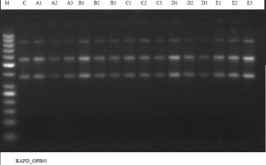
Sub lethal mutagenic effects of glyphosate herbicides on juveniles of Clarias gariepinus using randomly amplified DNA primers
Abstract
Keywords
Full Text:
PDFReferences
De Flora, S. and A. Izzotti, 2007. Mutagenesis and cardiovascular diseases: Molecular mechanisms, risk factors, and protective factors. Mutation research/fundamental and molecular mechanisms of mutagenesis, 621(1-2): 5-17.
Mamta, K. and A. Singh, 2017. Genotoxic effect of effluents discharged in ramgarh lake on freshwater fish channa punctatus. Research journal of science and technology, 9(4): 669-674.
Radhika, P. and Y. Jyothi, 2019. A review on genotoxicity, its molecular mechanisms, regulatory testing in drug development process. International journal of pharmaceutical science and research (IJPSR), 10(9): 4054-4069.
Snyder, R. D. and J. W. Green, 2001. A review of the genotoxicity of marketed pharmaceuticals. Mutation research/reviews in mutation research, 488(2): 151-169.
Van Ael, E., C. Belpaire, J. Breine, C. Geeraerts, G. Van Thuyne, I. Eulaers, R. Blust and L. Bervoets, 2014. Are persistent organic pollutants and metals in eel muscle predictive for the ecological water quality? Environmental pollution, 186: 165-171.
Zhang, L., I. Rana, R. M. Shaffer, E. Taioli and L. Sheppard, 2019. Exposure to glyphosate-based herbicides and risk for non-hodgkin lymphoma: A meta-analysis and supporting evidence. Mutation research/reviews in mutation research, 781: 186-206.
Zhou, J., J. Li, R. An, H. Yuan and F. Yu, 2012. Study on a new synthesis approach of glyphosate. Journal of agricultural and food chemistry, 60(25): 6279-6285.
DOI: https://doi.org/10.33865/wjb.006.03.0446
Refbacks
- There are currently no refbacks.
Copyright (c) 2021 Ella Adakole Boniface, Azua Terese, Aguoru Celestine, Onekutu Amana, Ella Agbam Francis, Addy Jose

This work is licensed under a Creative Commons Attribution 4.0 International License.
Print ISSN: 2522-6746 : Online ISSN: 2522-67541. How to register 2. How to reset password2. How to prepare a manuscript before submission 3. How to submit a paper 4. How to check the review status of a paper5. How to check the plagirisim or similarity report